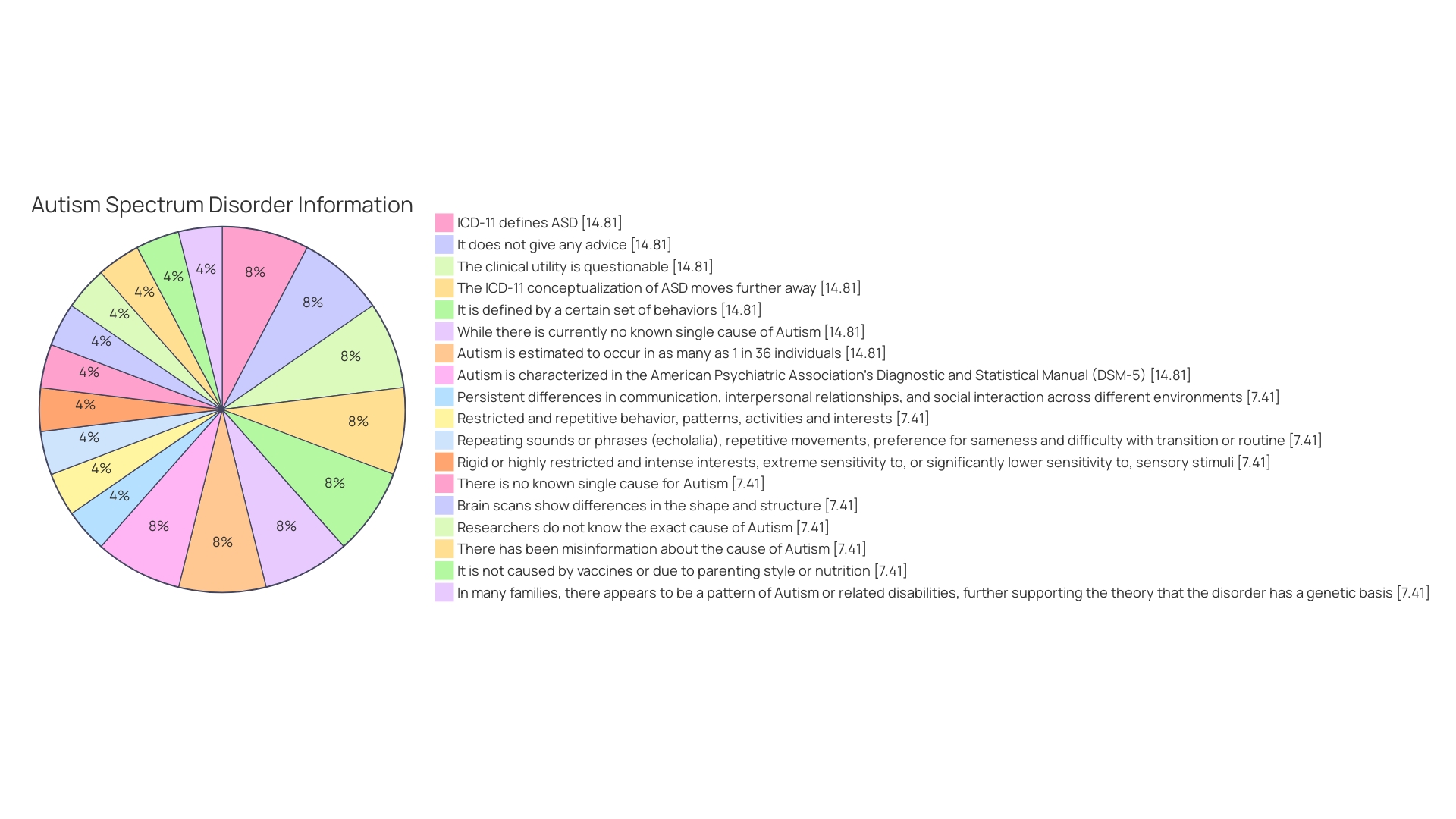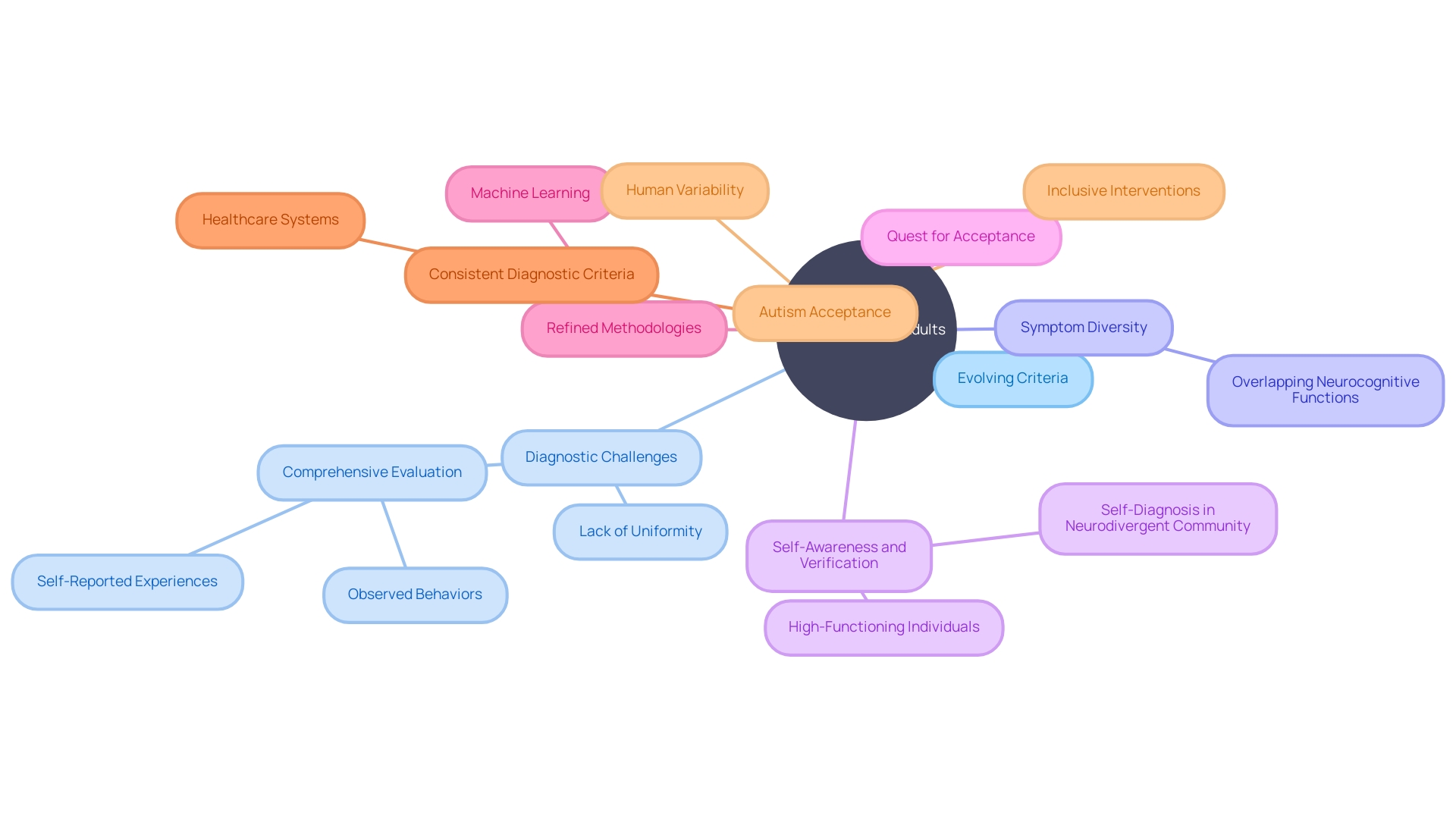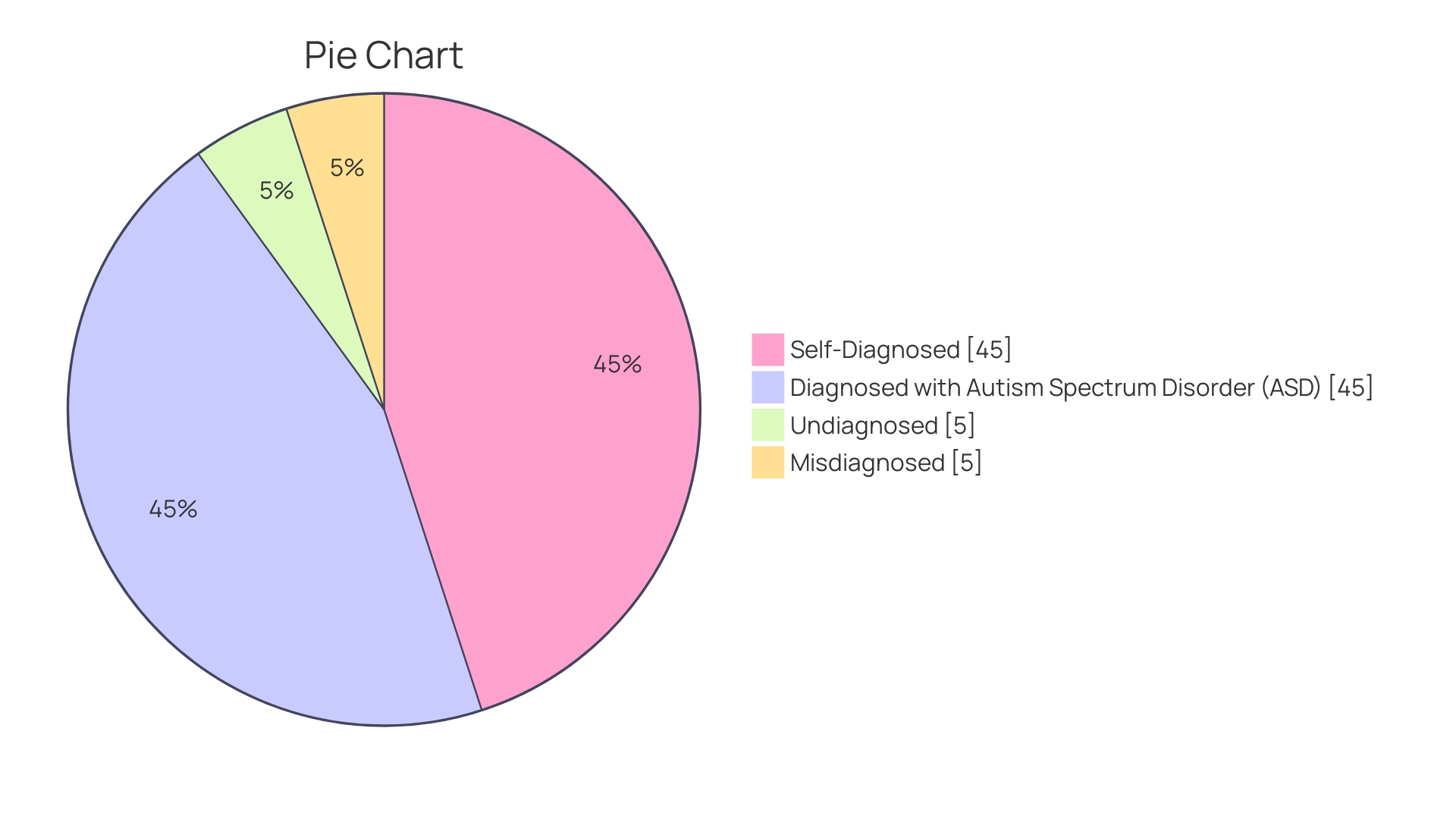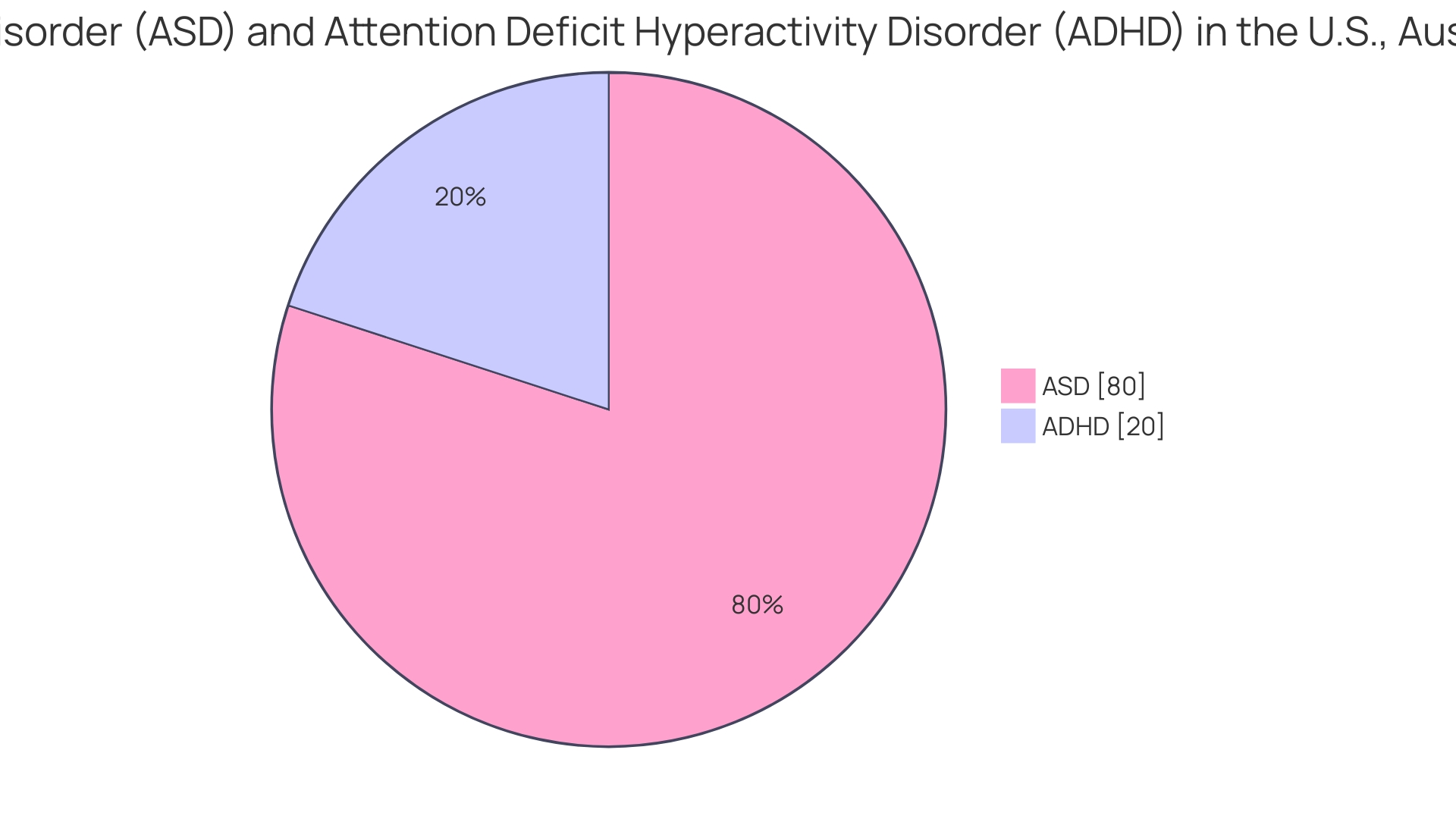Introduction
Autism Spectrum Disorder (ASD) is a complex condition that presents unique challenges for individuals throughout their lives. Understanding the intricacies of ASD is crucial for parents and advocates who are navigating this journey. In this article, we will explore the various aspects of ASD, from its definition and diagnostic criteria to the importance of accurate evaluation and the role of cognitive and behavioral assessments.
We will also discuss common autism screening tests for adults and strategies for comprehensive evaluation. By delving into these topics, we aim to provide valuable insights and resources that empower Parent Advocates to ensure the well-being and success of their children with ASD.
Understanding Autism Spectrum Disorder (ASD)
Autism Spectrum Disorder (ASD) encompasses a wide variety of behavioral and communicative conditions, presenting a spectrum of challenges that individuals face from early childhood through their entire lives. Each person experiences ASD uniquely, with some needing substantial support due to significant difficulties in social interactions, communication, and the presence of rigorous, repetitive behaviors, as outlined in the DSM-5. Studies have shown that there is no definitive cause for ASD, yet differences in the brain's shape and structure are indicative of its presence, contrasting against neurotypical development.
Despite common misconceptions, factors like parenting styles, vaccines, and nutrition are not causes of Autism. Instead, there is strong evidence suggesting genetic links to the disorder. Furthermore, technology and artificial intelligence are on the verge of transforming early diagnosis, and treatments such as the TEACCH educational approach, which leverages the preference for consistency and visual cues, are tailoring learning experiences to the individual needs of those with ASD.

Why Accurate Evaluation is Important
The approach to diagnosing autism spectrum disorder (ASD) in adults must be meticulous, as it paves the way for them to tap into vital support and intervention strategies that can significantly improve their life experiences. Accurate diagnostics illuminate an individual's unique capabilities and areas of difficulty, thereby equipping support professionals with the insight to customize interventions and strategies effectively.
This personalized intervention not only fosters individual growth but also ensures that adults with autism can access the necessary resources to excel in their daily activities and societies at large. For instance, Christopher McDougle, MD, of Harvard Medical School, stresses the importance of acknowledging the growing population of autistic adults and their need for quality health care comparable to that of neurotypical individuals. His admonition is clear: as autistic individuals move beyond the educational system, a supportive framework that addresses their ongoing medical and social needs is indispensable.
Embracing this necessity, Harvard Medical School has initiated a program focusing on enhancing health care for autistic adults, signaling a broader, global impact on how autism care is perceived and provided in health systems. With such initiatives in place, adults with ASD can optimistically navigate a future where their needs are not only recognized but robustly supported.
A different yet complementary approach to understanding ASD is unfolding in the realm of technology, where innovative research from Korean scientists suggests that artificial intelligence (AI) could help diagnose autism through retinal scans. This venture, which relies on a computer simulation model using real-world data such as eye photographs, points to an emerging objective biomarker-based tool that could revolutionize access to autism diagnostics, especially for minority and underserved communities that have historically faced disparities in autism evaluation.
The utility of diagnostic tools and services in clarifying the landscape of ASD cannot be understated. Reports reveal a significant use of mental health and employment services by autistic adults, highlighting the pressing need for services that enhance community engagement and quality of life. Moreover, the existence of various autism treatment measures — like the widely accepted Vineland scale assessing adaptive functioning — underscores the complexity of autism and the need for broad agreement on effective standards for care and support.
Ultimately, the dialogue surrounding autism evaluation in adults has opened the door for self-advocates and supporters to consider whether official diagnoses are always necessary. Given the numerous challenges and the potential for inconclusive outcomes prevalent in the medical testing model for autism, self-diagnosis is a respected alternative within the autistic and neurodivergent community. Thus, for those where an official diagnosis isn't pivotal for accessing support, the community offers a welcoming embrace, acknowledging the multifaceted nature of autism and the validity of personal identification with the spectrum.
Common Autism Screening Tests for Adults
Professionals in the field of autism spectrum disorder (ASD) utilize a suite of tests to accurately evaluate adults who may present characteristics of autism. Tools such as the Autism Diagnostic Observation Schedule (ADOS) provide valuable insights into core aspects of autism, including communication, social interaction, and the presence of repetitive behaviors. Similarly, the Autism Diagnostic Interview-Revised (ADI-R) leverages interviews with the individuals and their caregivers to build a rich, developmental history and current behavioral profile.
Another key test, the Social Responsiveness Scale (SRS), enables individuals to self-report on aspects of social skills and behaviors, offering yet another perspective to inform diagnoses.
The convergence of these assessments is critical to formulating a comprehensive understanding of an individual's unique situation. This is especially important considering that many autistic adults have previously been misunderstood by practitioners or denied the nuanced care they require. Instead of a one-size-fits-all approach, a combination of tailored assessments and an attentive consideration of a person's needs can create a holistic view that accommodates the strengths and challenges faced by autistic adults.
In fact, the concept of needing a formal diagnosis to be considered autistic is contested within the autistic community, with many seeing value in self-identification due to the limitations and inconsistencies observed in medical testing. Research underscores the diversity of therapeutic needs among autistic adults and calls for clinicians to adapt and encompass these unique requirements within their practices.
Furthermore, breakthroughs in diagnostic methodologies, like those backed by the Autism Community in Action and pursued by innovative companies such as NeuroQure, highlight a growing appreciation for timely and accurate autism identification. This progression shows promise to significantly shorten the taxing journey towards diagnosis, particularly for families at higher risk. Advances such as analyzing eye movement responses to specific stimuli are paving the way for more comprehensive and accessible diagnostic tools, which could revolutionize early detection and intervention strategies.
Cognitive and Behavioral Assessments
Cognitive and behavioral assessments are critical in understanding adult autism spectrum disorder, as they provide insight beyond initial screenings. By evaluating intellectual abilities, language aptitude, and problem-solving skills, cognitive assessments uncover an individual's strengths and mental processing characteristics. Behavioral assessments delve into observable aspects, pinpointing challenges in social engagement, response to sensory input, and patterned actions that are indicative of ASD.
However, these tools are just part of a comprehensive diagnostic approach. Diagnoses hinge on a blend of detailed developmental histories from parents or caregivers and the clinician's direct behavioral observations, aligning with the Diagnostic and Statistical Manual of Mental Disorders, Fifth Edition (DSM-5) criteria.
Professionals such as neurodevelopmental pediatricians, child neurologists, and geneticists, among others, might be involved for further assessment if needed. With advancing research, federal initiatives like those from the National Institutes of Health (NIH) are enhancing the development, testing, and utilization of cognitive assessment tools. These endeavors are crucial for diverse populations, including neurodiverse individuals and those with developmental disabilities.
Embarking on diagnostic assessments isn't always essential for self-identification within the autistic community. With diverse opinions and potential for inconclusive medical testing results, some may opt not to pursue official diagnosis if it doesn't impact the support they need. Nonetheless, an awareness of adult autism signs—such as social communication difficulties and restricted behaviors—can be enlightening for those recognizing such traits within themselves.
This knowledge empowers self-understanding and, where desired, the pursuit of formal evaluation.
Furthermore, involvement by entities like the Interagency Autism Coordinating Committee (IACC) confirms governmental commitment to improve autism research and services. This collaborative effort between federal agencies, autistic individuals, family members, advocates, and professionals, works to enhance understanding and support, without advocating for a sole perspective.
The path to diagnosis and understanding of autism in adults is multi-faceted and personal, with diverse tools and approaches reflecting the broad spectrum of autism itself. As research continues to evolve, so too does the landscape of cognitive assessments, directly impacting individuals and the professionals dedicated to their support and care.
Diagnostic Criteria and Challenges
The journey to diagnose autism spectrum disorder (ASD) in adults is nuanced and often riddled with obstacles. One in 45 adults in the U.S. are diagnosed with ASD; however, this figure belies the considerable number who have gone undiagnosed or misidentified over the years. Experts acknowledge that the criteria for ASD have not only evolved but also suffer from a lack of uniformity across medical professionals.
As a result, a comprehensive evaluation that leverages both observed behaviors and self-reported experiences is critical in reaching an accurate diagnosis.
Moreover, the spectral nature of ASD symptoms—covering a broad spectrum of social communication difficulties and restricted, repetitive behaviors—reflects in adults no less than in children. Yet, the diversity of neurocognitive functioning and its overlap with symptoms of other conditions add layers of complexity to an adult diagnosis. High-functioning individuals or those with milder manifestations of autism, in particular, might only seek a diagnosis later in life, often due to a growing self-awareness or a quest for self-verification and community acceptance.
This complexity is underscored by the neurodivergent community's acceptance of self-diagnosis, recognizing the inadequacies within the current medical testing frameworks. For many pursuing an evaluation, inconclusive results are a frequent outcome, leading to reflections on the necessity of an 'official' diagnosis if it doesn't impact the support and success one seeks.
Contemporary research offers an optimistic outlook, underscoring efforts to refine diagnostic methodologies, such as utilizing machine learning applied to brain imaging data. Yet, the challenge of translating these advances into consistent, accessible diagnostic criteria across health care systems persists. Harvard Medical School's Adult Autism Health Resources initiative champions this endeavor, advocating for the delivery of quality medical care to neurodivergent adults on par with their neurotypical counterparts.
As society continues to shift toward a deeper understanding of autism, driven by the neurodiversity movement, so too must the approach to diagnosing ASD in adults. This includes recognizing autism not as an ailment but as part of human variability, demanding inclusive and unbiased interventions that acknowledge autism as part of one's identity rather than a set of behavioral deficits to be remedied.

Strategies for Comprehensive Evaluation
In the quest to understand and support adults with autism spectrum disorder, one key issue is the effectiveness of current diagnostic practices. With a growing awareness of the vast neurodivergent community, some choose self-diagnosis due to challenges in the medical testing model that often yield inconclusive results. For many, a formal diagnosis may not significantly change the support they need to thrive.
In light of this, it's essential to acknowledge that the evaluation of ASD in adults surpasses the need for mere clinical testing. It encapsulates a spectrum of tools – including cognitive and behavioral assessments and interviews with individuals and their caregivers. This multidisciplinary approach enlists the expertise of psychologists, psychiatrists, speech therapists, and occupational therapists, aiming for a nuanced portrait of each individual's abilities and barriers.
While this in-depth process can offer validation and aid in securing specific services, the Harvard initiative for Adult Autism Health Resources illuminates an urgent need for healthcare system reform. It casts a spotlight on providing quality medical care for the autistic adult population akin to that which neurotypical individuals receive. As research methodologies evolve, from quasi-experimental studies to randomized controlled trials, the evidence base for selecting interventions is also solidifying.
The opinions of the Interagency Autism Coordinating Committee (IACC) inspire efforts to advance a synchronized approach to autism services, reflecting the experienced voices of various stakeholders.
Amidst changing paradigms in autism care, it's clear that adaptive functioning is a critical measure of successful intervention, as highlighted by a recent analysis of treatment studies. The Vineland Adaptive Behavior Scales, for instance, assess practical life skills and broader cognitive aspects, revealing a confluence of intelligence and daily functionality. Statistics underscore the impact of services like mental health and employment support, which most surveyed autistic adults have accessed to enhance their engagement within the community.
Notably, those actively participating in mental health counseling showed increased full-time employment and broader community visitation, underscoring the interconnectivity between service access and life quality.
Given the individual variability of ASD and associated needs, embracing a rich tapestry of assessments, informed by an array of personal experiences and rigorous research, positions us to offer compassionate, individualized care that aligns with the lived experience of autistic adults.

Role of Cognitive Profiles in Diagnosis
Cognizant of the diverse abilities individuals with ASD may possess, such as enhanced visual-spatial skills and heightened attention to detail, clinicians must navigate a nuanced evaluation process. Conversely, it's also common for these individuals to face challenges in social cognition or executive functioning. A comprehensive understanding of each person's cognitive profile not only improves diagnostic precision but also paves the way for bespoke support strategies.
This tailored approach aligns with the findings from the Rutgers Center for Health Services Research that emphasize the need for a more personalized healthcare experience for those with cognitive disabilities, as they’ve reported far lower satisfaction compared to the general population.
Recent advances, heralded by experts from the MIND Institute and referenced in the Disability and Health Journal, underline the shift towards individual-based healthcare models. Incorporating the unique experiences and backgrounds of individuals into their care is now regarded as a critical component in fostering equitable practices – a sentiment echoed by professionals like Abbeduto and Kover, who advocate for the need to challenge biases in favor of a more person-centric approach.
The American Psychiatric Association’s DSM-5 and a wealth of diagnostic tools support clinicians in this intricate endeavor by integrating observations of behavior with invaluable insights from parents and caregivers. While no singular tool is sufficient for diagnosis, combining various resources ensures a holistic perspective is achieved. Reflecting on the expansive cohort studies and the rigorous research reporting guidelines followed, it's evident that the ongoing pursuit of understanding autism is grounded in a commitment to respecting and responding to individual differences and needs.
Importance of Behavioral Observations
The discernment of autism spectrum disorder (ASD) in adults is pivotal, considering 1 in 45 adults in the U.S. are diagnosed with ASD. A meticulous approach involves a blend of behavioral observations and a thorough review of the individual's developmental history. Experts meticulously document behaviors across various environments, scrutinizing patterns of interaction, social engagement, and daily functioning.
These observations are instrumental in determining the nuances of social communication and any sensory sensitivities which parallel the common indicators of autism seen in challenges with social skills and repetitive behaviors.
Ricki Robinson, a New York state-licensed Board-Certified Behavior Analyst, underscores the value of leveraging technology to catalyze high-quality, coordinated care for ASD diagnosis and treatment. This aligns with the emerging need for equity in healthcare, as highlighted by Dr. Kristin Sohl, indicating that minority, low-income, and rural communities face significant delays and obstacles in obtaining ASD diagnosis for their children. Eye-tracking technology and improved clinician resources could mitigate these disparities by empowering a broader spectrum of healthcare providers to recognize and diagnose ASD reliably.
The diagnostic process for ASD employs a multifaceted toolset, as per the American Psychiatric Association's DSM-5. Despite an array of assessment methods, no single tool should dictate the diagnosis. With around 70% certainty in evaluations of young children at specialized centers, there's a substantial margin of ambiguity, emphasizing the role of behavioral observations in clinching a diagnosis.
Furthermore, early concerns from parents often precede formal diagnoses, typically delayed until ages 4 to 5, illustrating the critical need for vigilant early observation and intervention to improve the trajectory of care and support for those with ASD.

Conclusion
In conclusion, understanding Autism Spectrum Disorder (ASD) is crucial for parents and advocates navigating this journey. ASD is a complex condition that manifests uniquely in each individual, with differences in brain structure and genetic links being key indicators. Accurate evaluation is important for adults with ASD, as it enables tailored interventions and access to necessary resources for success in daily activities.
Common autism screening tests for adults, such as the Autism Diagnostic Observation Schedule (ADOS) and the Autism Diagnostic Interview-Revised (ADI-R), provide valuable insights into core aspects of autism. Cognitive and behavioral assessments go beyond initial screenings, providing a comprehensive understanding of an individual's strengths and challenges.




